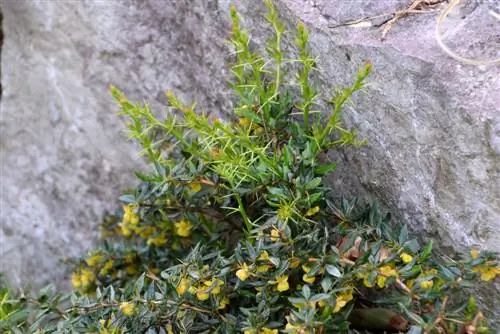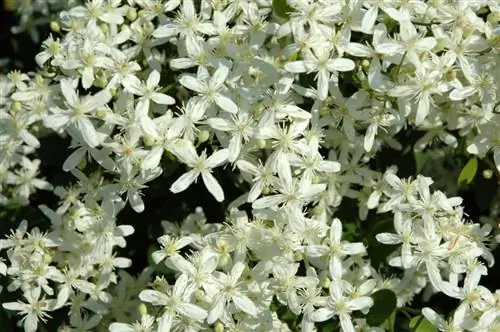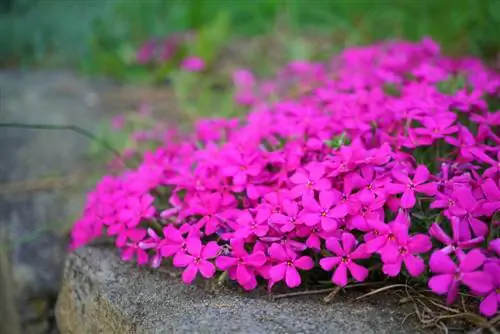- Author admin [email protected].
- Public 2023-12-16 16:46.
- Last modified 2025-01-23 11:20.
Almost everyone knows the lush, purple-flowering, seemingly endless lavender fields from Provence. In Germany, too, lavender can be easily planted as a hedge or even as a ground cover.

Can you use lavender as a ground cover?
Lavender as a ground cover is possible - low-growing varieties such as “Hidecote Blue”, “Peter Pan” or “Dwarf Blue” are particularly suitable for this. 12 to 16 plants should be planted evenly spaced per square meter, ideally in sandy, stony and nutrient-poor soil.
Planting lavender as a ground cover
Although lavender is not a classic ground cover - after all, the plant naturally grows upwards and does not crawl along the ground - it can still be planted to cover the ground. As a result, you will be able to grow a more or less low hedge that is ideal as a border for beds or as a path border. To achieve this goal, you need between 12 to 16 plants per square meter, which you should plant as evenly spaced as possible. The best time to plant is late spring or early summer. Winter-hardy lavender varieties can also be used in August. However, before you get to work, you should first check the soil conditions in your garden. Lavender needs sandy to stony, nutrient-poor soil. Heavy clay or peat soils, on the other hand, are not very suitable. Lavender is also a sun lover and prefers a location in full sun.
Suitable lavender varieties
The low-growing lavender varieties of the hardy species “Lavandula angustifolia”, the so-called real lavender, are particularly suitable as ground cover. Varieties such as “Hidecote Blue”, “Peter Pan” or “Dwarf Blue” only grow to a height of between 25 and 40 centimeters. They are not only available in the typical lavender blue, but also in white or pink flowers.
Maintaining lavender hedges
Lavender is a perennial shrub that tends to become woody. So that you can enjoy your hedge for many years to come, you should care for it appropriately. Lavender bushes should be cut at least once, and preferably twice a year. Otherwise they become bald and literally fall apart. Cut your plants in spring - if the weather is good and warm, as early as March if possible - by about two thirds, but without cutting into the old wood. A second cut is then carried out in summer, at the beginning of August at the latest, when the bushes gradually wither. This second, not quite as drastic, pruning encourages the plants to bloom a second time.
Tips & Tricks
Some people would like to plant ground-covering lavender between their roses to keep aphids and ants away from them and to get the rampant weeds under control. Unfortunately, roses and lavender do not get along due to their very different care and soil requirements. Weeds can also become a problem because the lavender doesn't keep them away. Instead, you need to weed regularly.






